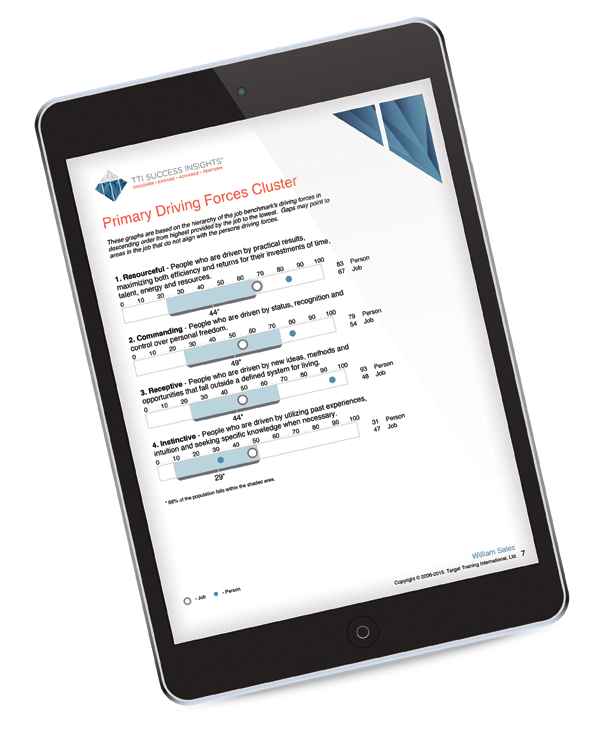What do you do when 84% of people are not satisfied with their Team?
The Straight up: How to Make your Team Work
How would you respond if we said ‘let’s turn that figure around, using real life data and case studies from the best organisations.’ Would you be interested? Would you be up for the challenge?
Recently we asked YOU, our LinkedIn contacts, ‘what struggles do you have in building high performing teams in your organisations?’ We wanted to hear what you say are the real time problems you experience, in order to know how specifically we could help you. The engagement we got was phenomenal. Thank you so much for diving into the conversation.
The question on everyone’s tongue above all was, ‘is there an exact recipe for driving High Performance teams?’
33.3% see their Team as average or below average
You asked and we will answer but first some background. Alongside our LinkedIn conversation, TTI Global Headquarters recently partnered with HR.com in the US to complete The State of Employee Teams in 2018 research study. Across 562 HR Respondents, in differing sectors, the results came back that organisations are now relying heavily on ‘teams’ to get work done.
75% respondents get work done through teams to a high or very high degree.
59% of the respondents stated that 60% of their employees work in teams.
Over 5% reported a low reliance on teams in their organizations.
– TTI SI & HR.com Hacking Teamwork Study 2018

Specifically the questions this study set out to answer were the following:
o Discover the challenges teams face in their organisations?
o Understand what drives Team effectiveness?
o Understand the challenges to exceptional Team performance?
o Uncover the structure for successful Team performance now and into the future?

What really stood out from this study was the amount of dissatisfaction that people felt about their Teams. Only 16% of respondents rated their teams as excellent! So what about the other 84% of people? And what exactly were these 16% doing differently that we could all learn from?
In parallel, in our LinkedIn Conversations with you about how companies struggle to build High Performing Teams you suggested causes such as:
‘A failure to identify what high performance looks like’ – Richard Murray.
‘A lack of clarity about what direction the business is headed’ – Fiona Mc Kenna.
‘Because each project is different, what worked on the last project won’t necessarily work on the next’ – Kate Lawlor.
‘A lack of emotional intelligence among decision makers within the group’ – Joseph McGuire.
What is different about high performing teams?
From the TTI research data 5 critical steps emerged for building High Performing Teams. Let’s jump into two of them for this blog…
Communication and Goals
‘Open communication is essential’ as are ‘regular 121 meetings’ – Richard Murray & Federica Brungiu.
According to our TTI research study, Communication rated at 78% and Goal Setting rated at 72% as the top essential characteristics for both team members and their managers. In fact organisations that had Sense of purpose as the top characteristics for High Performing Teams were found to be higher performing. Sense of purpose is an important element to enable effective communications and goal setting.
Do you have a Vision Statement, articulating your Purpose – why you exist, your Principles – how you interact with the world and your Pursuit – what big goal you are trying to achieve? By communicating your purpose, principles and pursuit to your employees you are developing a high performing team.
Collaborative Leaders
The Best High Performing Teams had collaborative leaders and valued them significantly more than the command and control style by a huge 81%. These Teams are mostly project teams and are largely self directed, ie they have the authority to make decisions when they see fit. Moreover as the structure of the team has to adapt to take on different aspects of a project, they tend to have different leaders at different times. Therefore these more collaborative leaders lead better as they can adapt to different roles and the environment.

‘Believing that a manager must dictate instructions 100% of the time, rather than engage and bring the person or team on the journey. You cannot ‘buy’ personal or team buy in to an idea, you have to listen, convince and deliver’ – Larry Millard.
‘The goal is to create an environment that facilitates/encourages high performance. The struggle is in demonstrating to all involved that your success is my success and vice versa.’ – Patrick Whelan.
Final Thoughts
In our next blog we will explore the following 3 Critical steps to Hacking Teamwork 2018. We will also look at some Case Studies from companies who are famous for Teamwork.
If you can’t wait watch the TTI Webinar on Hacking Teamwork 2018. We have also produced a TTI Success Insights Hacking Teams Paper which we are happy to send out to you. Please email Padraig@ttisii.com or send a LinkedIn mail.

We thought Dr Ken Germaine summed it up nicely from our LinkedIn conversation;
‘Setting clear goals for the team and clear rules on how people engage together is important. The most important thing is to walk the walk. Too many times managers write lovely strategies and policies that look good on paper but then they manage the team in a manner that undermines the policies they write. You have to behave the policy and lead by example. If you want collaborative then collaborate. If you want open and transparent then accept the criticism. A self confident management gives off a sense of confidence that everybody else sense and gain confidence in.’ – Ken Germaine
If you have anything to add to our conversation, please leave a reply below. TTI Success Insights believe in achieving success through your people using our scientifically validated and powerful tools. Our DEAP is a system to manage the whole employee lifecycle; Discover, Engage, Advance, Perform. With a little effort we can all build High Performing Teams.

How Employee Experience Leads to a Highly Productive Workforce
We believe in order to create engagement, employers need to move beyond believing that experience is all about extra benefits at work such as Massages Mondays and Pool Tables. Real employee experience begins with meaningful work. What can your organisation do to create meaningful work for your people? What can you do to make your people feel connected and to feel like they belong and they trust you? Isn’t this what Experience is all about?
DISC vs. MBTI
How does DISC compare to MBTI? This is a common question many people have asked us over the years. There are many different angles to consider, as both tools are used frequently in organizations, but in different ways. In this article, we will answer...
Podcast – Building Authentic Empathy
Recently Padraig spoke with Dale Dixon on the complete leader podcast. Host Dale Dixon interviews Business Coach and Strategist Padraig Berry, who is the CEO of One Focus Business Consultants and TTI Success Insights Ireland. On today's episode, Dale and Padraig...

FREE DISC Assessment: Find out what your behaviours really are!
Have you ever taken a DISC Assessment? Actually… Have you ever taken a TTI DISC Assessment? Well why wait any longer, lets find out why you really behave the way you do!




